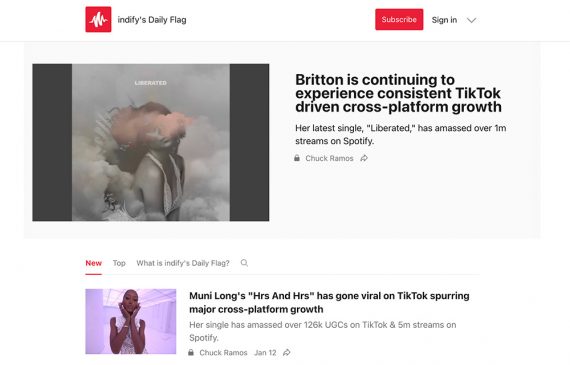Paid newsletters are driving profits in the creator economy. Podcasters, YouTube personalities, bloggers, musicians, business coaches, and the like are collectively called creators. Creators who are compensated directly or via a social platform represent the creator economy. And the creator economy is one of the fastest-growing forms of ecommerce.
Paid Newsletters
Paid newsletters are becoming popular, although they are just one of the ways creators are earning a living. Software-as-a-service platforms such as Substack, ConvertKit, Memberful, and Mailchimp have made it relatively easy for creators to sell newsletter subscriptions.
“We believe that what you read matters, and great writing is valuable. We’re building a future where writers can flourish by being paid directly by readers,” says the Substack home page.
How to Start
Value and a lack of advertising typically separate paid newsletters from free. When they pay for a newsletter, subscribers expect to get something of value in return.
Value. Identify what purpose the newsletter serves and what makes it valuable to the reader. Will the newsletter offer time-sensitive cryptocurrency tips? Will there be exclusive tutorials? How about detailed case studies?
For example, Indify’s Daily Flag is a paid subscription newsletter that uses social media data to identify artists who have the potential to become superstars. The newsletter is valuable among creators.

Indify’s Daily Flag creates value for thousands of paying subscribers.
Audience. The value a newsletter offers is related to the audience it serves. Some creators build the audience first. Perhaps they have a podcast and have encouraged listeners to sign up for free notifications of new episodes. That audience might also be interested in a premium newsletter. So the creator will try to upgrade them.
Other creators use advertising to build an audience, either promoting a free email subscription and then seeking to upgrade the audience to paid or by using ads to promote the paid subscription directly.
Facebook Leads ads, for example, are a good way to get subscribers.
Price. Indify’s Daily Flag costs $50 per month. Lenny’s Newsletter, which covers product, growth, and business topics, runs $15 per month. The Bitcoin Forecast by Willy Woo is $150 per month.
The point is that newsletter subscription prices vary. The price is relative to the value for subscribers while also generating a profit. A creator could consider what competitors are charging or A/B test subscription prices to learn what works best. Some creators could charge more if they built the audience first.
Schedule. Develop a publication schedule and stick to it. Paying subscribers expect their email newsletter to arrive as promised. If the newsletter is supposed to go out every Monday, it had better arrive on that day.
It can be a good idea to practice building the newsletter. Determine how long it takes and what problems might arise during production.
The Grind
Researching, writing, and publishing a paid newsletter can feel like a grind.
Gary Vaynerchuk, the business and marketing guru, has repeatedly told creators to pay their dues and put in the hard work of audience building. Vaynerchuk began by publishing wine videos on YouTube five days a week for roughly six years.
Starting a paid newsletter will take persistence. Be prepared to compose newsletters even when there are few subscribers, putting in as much energy as when there are thousands.
The Platform
Creators looking to earn money with a newsletter need a method of composing, distributing, and getting paid.
Composing. That act of writing the newsletter can be done on Google Docs, Microsoft Word, or even a text editor.
Images can be edited and resized using Adobe Photoshop, Canva, or system tools such as Apple’s Preview.
Distributing. SaaS email platforms manage subscribers, provide formatting tools, and send newsletters. Specialty offerings such as Substack have built-in payment tools.
When selecting a platform, consider deliverability and fees.
First, the platform should have put the newsletter in subscribers’ inboxes 80% of the time or more on average. The newsletter content will impact deliverability, but the email provider can do a lot to help.
Second, understand all of the platform’s charges. How many subscribers and deployments are allowed on free plans? What features are included? How will fees increase as the number of subscribers grows?
Payment. Depending on the platform, payments can take a few forms.
- Complete integration. Payment processing is built-in to the platform.
- Close integration. The creator connects a Stripe or PayPal account to the platform.
- No integration. The creator accepts payments and manually adds subscribers to the platform.
Each of these options has fees. For example, Substack charges 10% of the subscription price plus processing fees of about 2.9% + 30 cents per transaction.
If a creator had 1,000 subscribers paying $15 per month for $15,000 in gross revenue, Substack’s take would be roughly $2,135.





